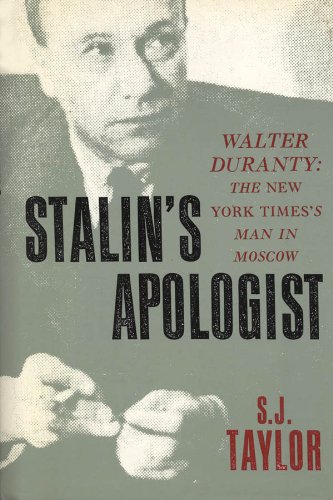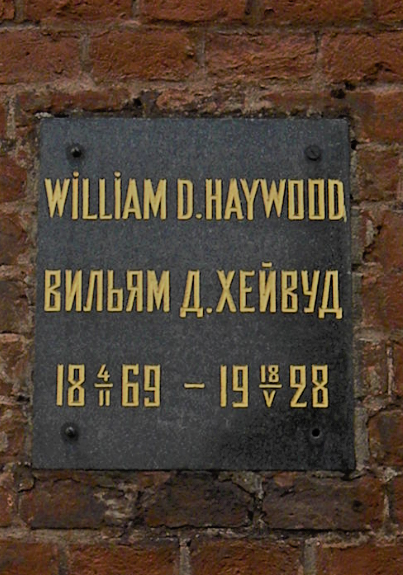Part one of this review is here.

Who is The Useful Idiot in John Sweeney’s 2020 thriller set in Stalin’s Soviet Union in 1933?
Although the book’s hero, Welsh journalist Gareth Jones, feels himself —in a moment of passing regret— to have behaved as such, the true useful idiots are those Westerners, diplomats and journalists, who are willingly hoodwinked by dreams of Communism whilst refusing to spread abroad stories of the violence, famine, and death before them.
And chief ‘useful idiot’ of the piece is Walter Duranty.
To remind you, from part one of this review, many of the characters in The Useful Idiot existed in real life; Gareth Jones for sure, and his journalistic nemesis, Walter Duranty.

British-born American journalist Walter Duranty, was awarded the Pulitzer prize for his reporting from the Soviet Union.
Stalin’s Apologist: Walter Duranty: The New York Times’s Man in Moscow (1990) by Sally J. Taylor details Duranty’s made-for-fiction life
When he wasn’t in Berlin having his wooden leg readjusted, or in St Tropez basking in the sun, or in Paris at the races in the Bois de Boulogne, the New York Times man in Moscow could usually be found among the throngs at the bar of the Metropol Hotel …
in New York’s Waldorf-Astoria, Duranty was introduced to the fifteen hundred dignitaries in attendance as “one of the great foreign correspondents of modern times” …
His sexual escapades were legion …
He told them tales about the dangers of opium …
He chain-smoked Camels and sipped Scotch as he talked.
Stalin’s apologist (prologue)
In Jones and Duranty, Sweeney already has two real-life characters that any fiction writer would be proud to invent. He then throws in a few more, some similarly drawing on real people, others conjured up for the sake of the narrative.
The motley group of ex-pats, formed largely of American socialists who settled in the Soviet Union under the impression it was on the way to becoming a workers’ paradise, form an unlikely set of characters.

Fred Beal and Bill Haywood did exist, though the latter could not have shared a drink with Jones or anyone else in spring 1933, as he died in 1928.
The plaque to his memory on the wall of the Kremlin confirms.
The young translator Evgenia, whose beauty turns out to be not the most intriguing of her characteristics, is the fictional character who creates the narrative bridge between novelized history and historical thriller. Despite never having existed in real life, she lives in this story as the key driver of page-turning mystery and plot development. The well-drawn Evgenia sparkles. She captivates Jones, is desired by Duranty, and acquires depth as the action accelerates to a conclusion.
When it comes to the Russia-in-fiction aspects of The Useful Idiot, Sweeney has of course researched the essential historical facts, and a little more. Like drinking with the late Bill Haywood, the storyline weaves between elements of history and a creative licence deployed to make a point.
The character of Harold Attercliffe first entertains then horrifies
Attercliffe is a fictional Yorkshireman, a socialist, an engineer, working for Metro-Vickers in southern Russia. Like the six English engineers caught up in the infamous Metro-Vickers Affair during Jones’s eventful 1933 trip to Moscow, Attercliffe is arrested and tried on charges of espionage and sabotage. Attercliffe’s torture in the Lubyanka out-does the lengthy questioning actually endured by the Metro-Vickers engineers.
When we first meet Attercliffe, things are little lighter. Gareth Jones is trying to find his way in Moscow and acosts a man in a flat cap.
[Jones] asked the man the way to Kurskaya station in his poor, clumsy Russian …
“It’s gdye nakhoditsya Kurskaya stantsiya, you daft sod,” the man replied, then took out a handkerchief and blew his nose.
“You’re British?” asked Jones.
“I am. Harold Attercliffe from Barnsley”
…
The loudspeakers clacked again.
“What is that phrase they keep on repeating?” asked Jones.
“The liquidation of cowlessness,” said Attercliffe.
“That’s gibberish.”
“Watch what you say out loud son. Or the GPU” —he pronounced it the Gay-Pay-Oo— “will be after you.”
the useful idiot
Every encounter with Attercliffe thereafter reveals more brutal truths about his life as a worker in the early Stalinist Soviet Union. Soon after this initial encounter, they meet again and come across three corpses down a gloomy Moscow side-street.
“It’s the famine,” said Attercliffe. “It’s far, far worse in the countryside but now people are dying here, in the heart of Moscow …
I can’t bear these credulous buggers who come over and think it’s all hunky-dory. George Bernard Shaw and the like.
The rights of workers here? They barely exist. You’re late for work by twenty minutes? You face prison.
Free movement of labour has been abolished. You can’t leave your village, town or city unless you’ve got an internal passport. That’s why they got rid of the Tsar. Well, he’s back, only he’s got a red star in his crown these days.
But if you say that out loud, you can end up in the GPU hot room … in the basement of the Lubyanka”.
The character of Harold Attercliffe represents the two sides of John Sweeney’s The Useful Idiot.
On the one hand, there is an element of the didactic about the novel, describing through fiction the history of those tumultous times. On the other, Attercliffe is part of that history told as thriller.
Occasionally the two elements jar; the historian of Stalin’s Russia in me querying some detail as if I were still working in the Russian State Archives, the lover of thrillers in me occasionally raising an eyebrow at some plot development that saw real-life characters deployed to unlikely fictional purpose.
Overall though, The Useful Idiot sticks in the mind and is an enjoyable read.

Sweeney has written other Russia-related thrillers that I have not yet read, but —judging by the publisher’s blurb and reviewers’ comments— appear to be less bound up in precise historical events.
He writes a good thriller, and so the adventures of Joe Tiplady are now on my ‘to read’ list.
Part one of this review is here.